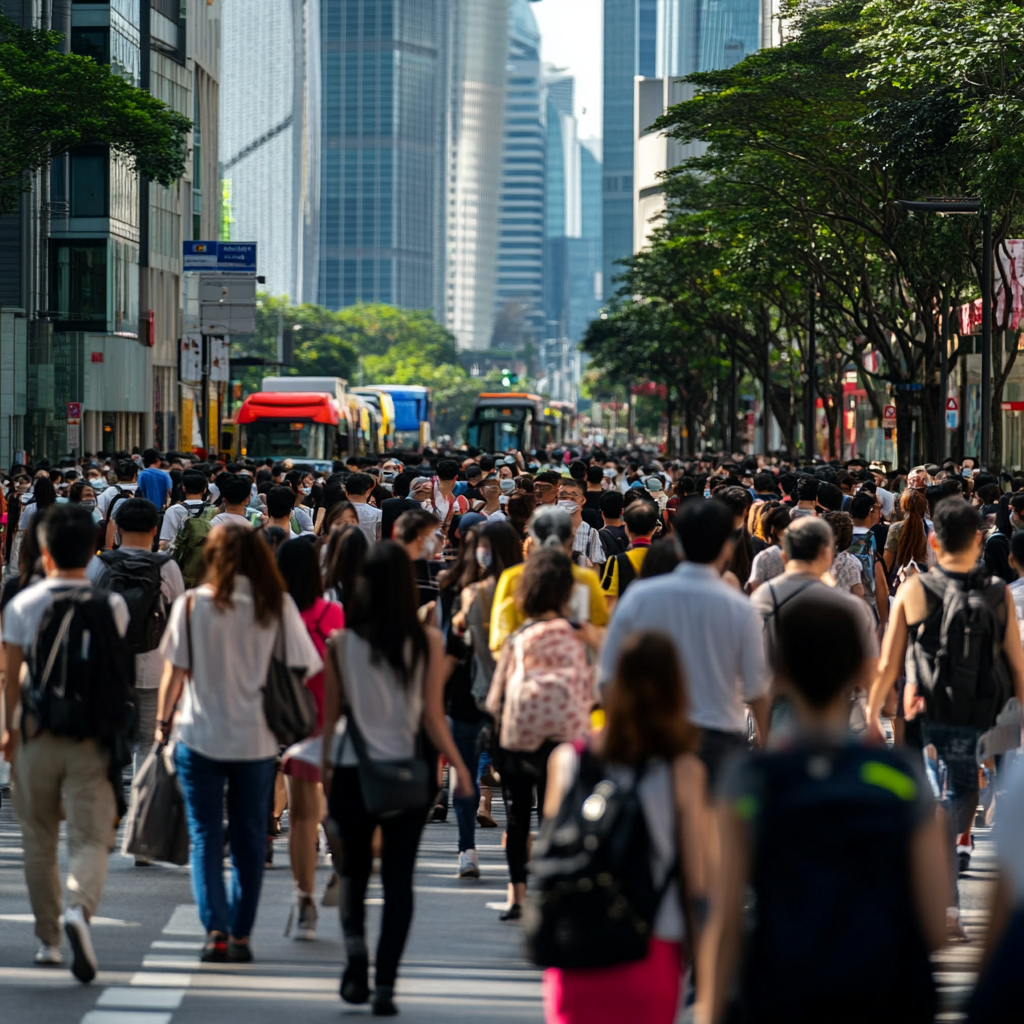According to the “Population in Brief 2024” report released by Singapore’s National Population and Talent Division on September 24, the country’s total population has reached approximately 6.04 million as of June 2023 — surpassing the 6 million mark for the first time in history. This represents an increase of around 120,000 people (about 2%) compared to the same period last year.

Singapore’s citizen population stood at 3.64 million (up 0.7%), and permanent residents (PRs) totaled 544,900 (up 1.2%). Non-residents saw a 5% increase, rising to 1.86 million, and were the main drivers of population growth.
Roughly two-thirds of non-residents are employed in labor-intensive sectors such as construction and caregiving — jobs generally shunned by locals. The remaining third are mainly made up of domestic helpers, dependents, and international students.
Breakdown of pass holders among the 1.86 million non-residents:23%: Work Permits in construction, shipbuilding, and manufacturing, 21%: Work Permits in other sectors, 15%: Domestic helpers (Work Permit), 16%: Dependant Passes and Long-Term Visit Passes (DP/LTVP), 11%: Employment Pass holders, 10%: S Pass holders, 5%: Student Pass holders.
Compared to five years ago, the number of non-residents has increased by 220,000, highlighting Singapore’s growing dependence on foreign manpower.
At the same time, new immigration has remained stable. In 2022, 23,472 people were granted citizenship, and 34,491 received permanent residency. Over the past five years, the annual average was about 22,400 new citizens and 32,600 PRs — similar to the 2014–2019 period.
However, aging remains a growing concern. The proportion of citizens aged 65 and above has risen from 12.4% a decade ago to 19.9% today. By 2030, one in four citizens will be over 65. The number of citizens aged 80 and above has also increased significantly, from 85,000 ten years ago to 142,000 — a 65% rise.
Even more alarming is the record-low birth rate. In 2022, only 28,877 citizen babies were born, down 5.1% from the previous year. The total fertility rate among residents dropped from 1.04 in 2022 to 0.97 in 2023 — the lowest ever. Contributing factors include COVID-19’s aftermath, economic uncertainty, and delayed marriage.
The average number of citizen marriages over the past five years was 22,800 per year, slightly lower than the 24,000 per year from 2014 to 2019. The median age for first marriage was 30.7 for men and 29 for women. Cross-national marriages accounted for 36% of citizen marriages, and foreign spouses are now older and more educated than a decade ago.
In a 2013 white paper, the government projected a population of 6.9 million by 2030. However, based on current birth rates and citizenship trends, the total population is now expected to reach around 6.4 million by then.
As Singapore faces both a declining birthrate and an aging population, it must carefully balance foreign manpower, immigration policies, and social sustainability in the years ahead.




